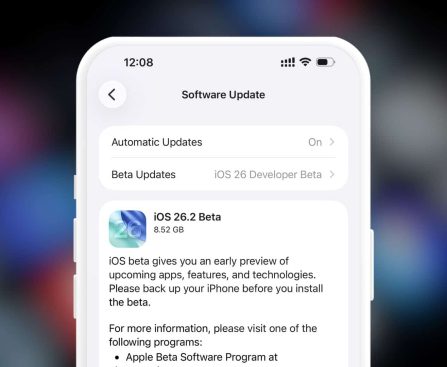### Apple Unveils Second iOS 26.3 Beta for iPhone
Apple has recently introduced the second beta iteration of iOS 26.3 for iPhone users. This update succeeds the first beta, which brought several noteworthy features designed to elevate user experience.
#### Highlighted Features of iOS 26.3 Beta
The initial beta of iOS 26.3 aimed at facilitating the transition for users migrating from Android to iPhone, simplifying the process of transferring data and settings. Furthermore, it provided updates to the Astronomy and Weather wallpaper selection, broadening the available choices for customization.
#### Recent Modifications and Additions
This beta release follows the official launch of iOS 26.2 in December, which delivered considerable enhancements, including new personalization options for Liquid Glass design elements and expanded functionalities for CarPlay. These updates demonstrate Apple’s continual dedication to enhancing the iOS experience and offering users greater control over their devices.
#### Expected Release Schedule
The completed version of iOS 26.3 is anticipated to be released to the public by late January or early February. As Apple persists in fine-tuning this operating system, users can anticipate further features and enhancements.
#### Looking Forward
Beyond iOS 26.3, excitement is building around iOS 26.4, which is anticipated to deliver a much-anticipated upgrade to Siri. This improvement could greatly enhance the performance and responsiveness of Apple’s virtual assistant, meeting user expectations for smarter and more intuitive technology.
#### Summary
As Apple advances with the iOS 26 series, users are encouraged to stay updated on the latest features and improvements. The continuous development and refinement of iOS highlight Apple’s commitment to improving user experience and adapting to the evolving demands of its customer base.










